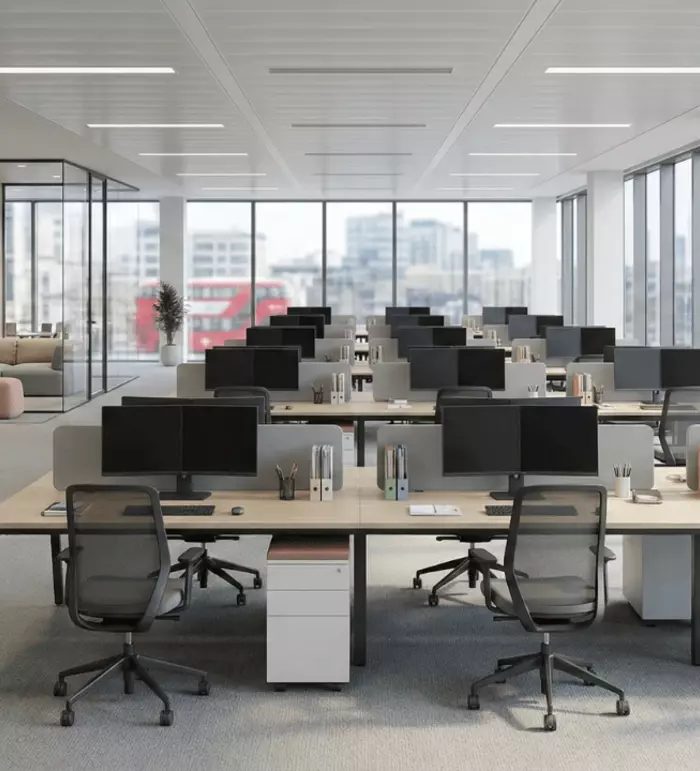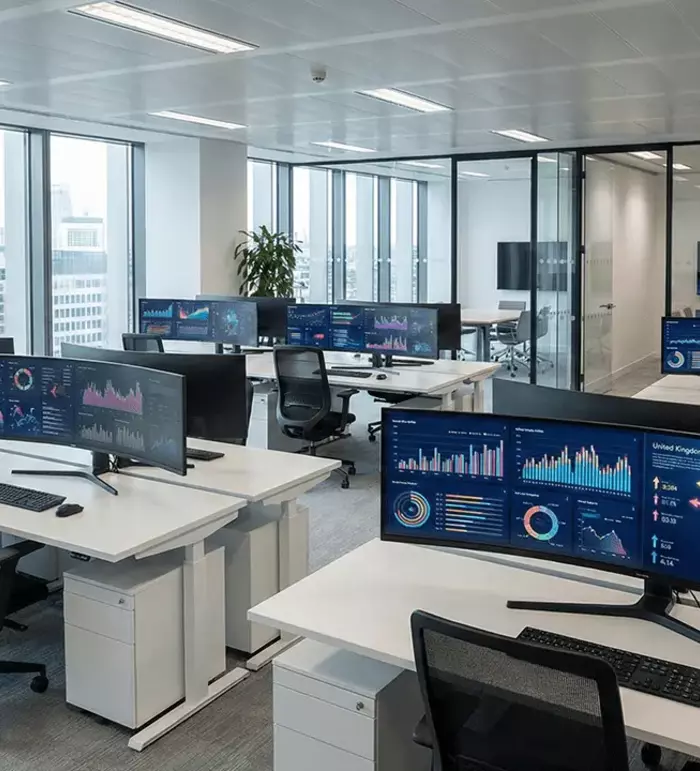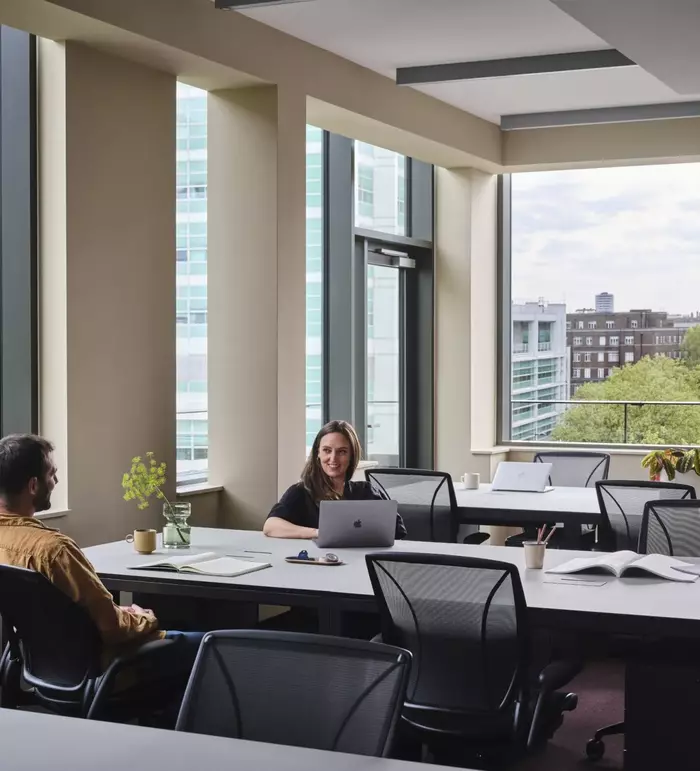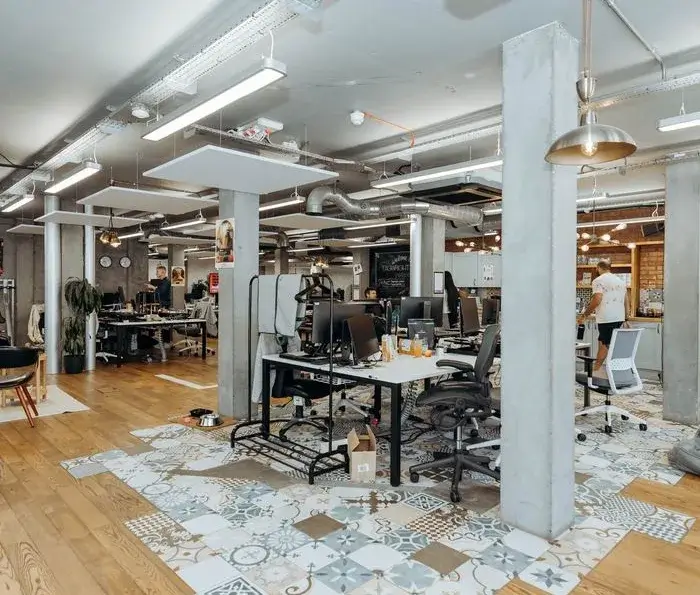For decades the corporate real-estate rulebook was simple: sign a long lease, fit out a headquarters and hope nothing changed. Then everything changed at once. A mix of remote-first tools, economic shocks and a new generation of employees who expect choice has toppled the old model. Today, from New York to New Delhi, major firms are asking a new question: "Where should my people want to work next quarter?" The answer they land on more often than not is a form of enterprise flexible workspace.
At first glance, flex space looked like a temporary fix for start-ups. Yet the biggest names on the Fortune 500 are now re-engineering their portfolios around it. Finance chiefs like the predictable costs, HR leads like the boost to engagement and brand directors love the opportunity to refresh their image without gut-renovations. In other words, flex is no longer fringe; it is an enterprise tool.
Key takeaways
- Fortune 500 demand for enterprise flexible workspace keeps rising.
- Flex helps large firms avoid CapEx while upgrading their brand presence.
- Cost savings of 20-40% are common when flex replaces surplus leases.
- Hybrid policies drive hub-and-club footprints using enterprise flexible workspace.
- Partner choice matters: look for providers that master scale, data & service.
Why big corporations are turning to flex
Large organisations rarely switch course without a clear business case. Three forces are making that case impossible to ignore.
Speed & certainty of cost. Fitting out 100,000sq ft in a prime market can swallow budgets for years. Flex vendors bundle furniture, tech and maintenance into a single monthly line. With inflation still lumpy in 2025, many boards prefer an Opex model that they can exit in 12-36 months.
Choice beats compulsion. Employee surveys show knowledge workers rank flexibility alongside pay rises. When offices are easy to reach, well-serviced and open on some days, they fill up; when they feel like relics, they don't. Flex enables the former by letting teams test-drive buildings and adjust.
Portfolio agility. M&A, regulatory shifts and digital projects can all create supernumerary head-count swings. A flex clause that lets a division grow 30 desks or shrink 50 next quarter protects both culture & cash.
Cost control in uncertain markets
Economic forecasting in 2025 still feels like reading tea leaves. Interest-rate paths remain hazy, and global supply chains can tighten overnight. The promise of a known, all-inclusive licence fee is therefore magnetic. According to CBRE's UK Flex Market Update Q1 2025, demand from large occupiers is the sector's fastest-growing slice, helping flex reach 10% of all London office space.
Finance teams also point to the reduction in lease liabilities on the balance sheet. A Preferred Office Network case study shows a Fortune 500 science & technology group trimmed long-term liabilities while expanding into new regions in weeks, not years.
Winning the talent war
Quiet offices are expensive adverts of disengagement. In its Future of Work Survey, JLL found 42% of corporate occupiers plan to increase flexible space usage within three years. The draw? Employees rate amenity-rich, wellness-led environments highly for job satisfaction. When your workplace doubles as a retention lever, the upsell is clear.
The data: how Fortune 500 usage has shifted
Fortune Business Insights values the global flexible office market at $45.24 billion in 2025, projecting it to treble by 2032 at a 17.1% CAGR.
Zoom in on the Fortune 500 cohort, and policies are still in flux. The Flex Index shows "full-time in office" mandates jumped from 13% to 24% in six months, yet hybrid minimums also rose from 2.3 to 2.9 days per week. The takeaway: enterprises want people back, but don't want empty space on other days. Flex provides the safety valve.
From "HQ-only" to hub-and-club
Early adopters swap the monolithic HQ for a network of hubs near commuter corridors, plus membership passes for occasional travellers. Verizon's 2025 relocation to a modern Mih3own tower while retaining suburban campuses follows this script, mirroring moves from Starbucks and JPMorgan. In each case, a core site anchors culture while satellite flex suites absorb project teams.
Lessons from early movers
Enterprises that made the switch three to five years ago offer practical guidance.
Salesforce: Opted for managed floors inside flex centres across Europe to house regional sales pods, cutting fit-out lead times from nine months to eight weeks.
HSBC: Restacked its Canary Wharf HQ & placed back-office units into flex space nearby, trimming annual occupancy costs by an estimated 28%.
IBM: Rebuilt consulting hubs in 12 cities with on-site event space from flex operators, improving utilisation rates by double digits.
The pattern shows flex is not a one-off swing but part of an ongoing optimisation cycle. Firms that treat it as a living component, not a stop-gap, capture both savings & cultural gains.
- Run a portfolio audit to spot underused floors.
- Shift volatile functions into flex suites first.
- Negotiate "blend & extend" deals tying core leases to flex credits.
- Track utilisation weekly to right-size quickly.
Building an enterprise flexible workspace strategy
Switching to flex is simple for a ten-person start-up; for a multi-national, it demands rigour.
Begin with data. Badge-in counts and booking analytics reveal true occupancy. Next, set policy guardrails that clarify who must attend where & when. A mupled policy sinks even the finest office design.
Now model the total cost of ownership. Include churn costs, move management and technology integration. Many finance teams find that replacing just 20% of a traditional lease portfolio with flexible licences can unlock 15-25% annual savings without harming headcount.
Action framework
- Define success metrics (utilisation, cost per seat, eNPS).
- Map roles to workspace types.
- Pilot a flex hub for 90 days.
- Collect feedback, iterate & scale.
Pilots matter because they surface hidden blockers from security approvals to union rules before national roll-outs. After three months of live data, you can renegotiate with confidence.
Choosing the right partners
Not all providers can serve a 2,000-desk requirement across continents. Vet partners on financial stability, breadth of inventory and willingness to sign enterprise MSAs. Flexioffices, for example, gives corporate clients access to 99% of the UK workspace market, ranging from serviced suites to managed floors.
Service depth also counts. Look for providers that integrate network security, ESG reporting and employee-experience apps. As CBRE notes, investor appetite for premium flex assets is rising, pushing operators to raise service standards to win those large contracts.
Conclusion
Flex space is no longer a fringe experiment; it is fast becoming the preferred safety-net & growth engine for blue-chip businesses. By pairing cost certainty with a people-first environment, enterprise flexible workspace allows firms to stay nimble without sacrificing culture. The lesson from Fortune 500 pioneers is clear: start small, measure ruthlessly and partner wisely because the office of tomorrow is already flexible today.
FAQs
Does flex space really save money for large firms?
Yes. Case studies show 20-40% reductions in total occupancy cost once CapEx and dilapidations are removed.
How secure are flex offices for regulated sectors?
Top-tier operators offer private VLANs, biometric access & audited ISO27001 protocols suitable for finance and pharma.
Can we keep our branding in a flex suite?
Managed solutions allow custom finishes, signage and colours so staff still "feel at home".
Is flex a long-term answer or a bridge?
Both. Many enterprises retain a flagship HQ but use flex to absorb project demand and enter new markets quickly.
How quickly can we move 500 staff?
With pre-fitted space and an enterprise MSA, moves can be completed in 4-6 weeks instead of the typical 9-month fit-out cycle.
















